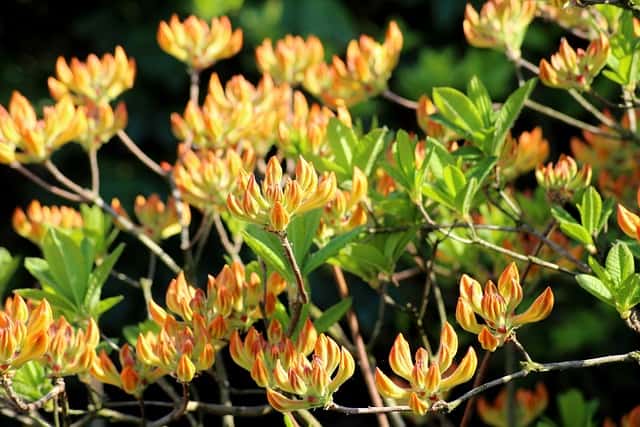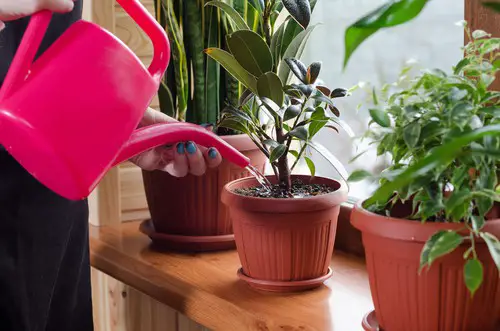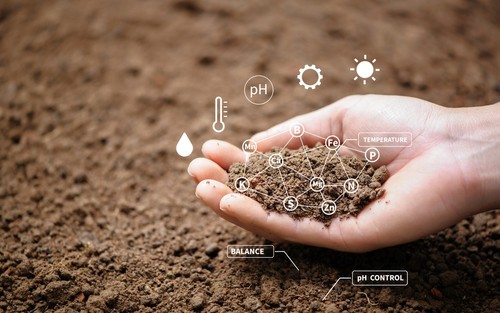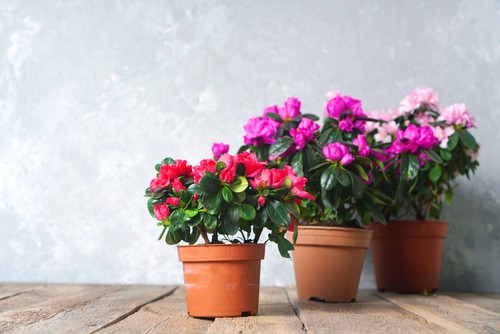Azaleas are a popular choice for many gardeners due to their stunning blooms and ability to thrive in a variety of conditions. However, one common issue that gardeners face is when their azalea leaves turning yellow in summer. This can be a cause for concern, as yellowing leaves can indicate a variety of problems.
Understanding the reasons behind azalea yellowing leaves is crucial to maintaining the health of these plants. Water plays a critical role in azalea health, and over or under-watering can lead to yellowing leaves. Additionally, soil conditions, including pH levels, nutrient deficiencies, and over-fertilization, can also cause yellowing leaves.
Pests and diseases can also impact the health of azaleas, leading to yellowing leaves and other issues. By understanding the various factors that can affect azalea health, gardeners can take steps to prevent yellowing leaves and keep these plants thriving.
Key Takeaways
- Proper watering and soil conditions are crucial for maintaining healthy azaleas.
- Nutrient deficiencies and over-fertilization can cause yellowing leaves in azaleas.
- Pests and diseases can also impact the health of azaleas.
You will also like:
Azalea Leaves Turning Yellow in Summer

Identifying Symptoms
Yellowing of leaves is a common problem that many gardeners face with their azaleas during the summer. The first sign of yellowing leaves is usually the yellowing of the tips of the leaves, which gradually spreads to the entire leaf. The leaves may also appear wilted and have a scorched appearance.
Causes of Yellowing
There are several reasons why azalea leaves may turn yellow. One of the most common reasons is a lack of nutrients in the soil. Azaleas require acidic soil with a pH between 4-6, and a lack of nutrients like nitrogen, iron, or manganese can cause the leaves to turn yellow.
Another common cause of yellow leaves is alkaline soil. Azaleas and rhododendrons require acidic soil, and a soil pH above 7 can cause the leaves to turn yellow.
Overwatering or underwatering can also cause yellowing of leaves. Overwatering can lead to root rot, which can cause the leaves to turn yellow and fall off. Underwatering can cause the leaves to dry out and turn yellow.
Pests and diseases can also cause yellowing of leaves. Azalea lace bugs and spider mites are common pests that can cause yellowing of leaves. Fungal diseases like root rot and leaf spot can also cause yellowing of leaves.
Role of Water in Azalea Health
Proper Watering Techniques
Water is essential for the growth and maintenance of azaleas. Proper watering techniques are crucial to ensure that the plants receive the right amount of water. Azaleas require moist soil, but they do not like to sit in water.
Overwatering can lead to root rot, which can cause the leaves to turn yellow and fall off. Underwatering can also cause the leaves to turn yellow and wilt.
To water azaleas properly, it is important to water deeply and infrequently. This means that the soil should be moistened to a depth of at least 6 inches. The frequency of watering will depend on the climate, soil type, and drainage.
In general, azaleas should be watered once a week during the growing season. During periods of drought, they may require additional watering.
Effects of Over and Underwatering

Overwatering can lead to several problems, including root rot, yellowing leaves, and wilting. Root rot occurs when the roots are constantly wet, and the soil does not have a chance to dry out.
This can cause the roots to rot, which can lead to the death of the plant. Yellowing leaves and wilting can also be caused by overwatering. When the soil is too wet, the roots cannot absorb oxygen, which can cause the leaves to turn yellow and wilt.
Underwatering can also cause yellowing leaves and wilting. When the soil is too dry, the roots cannot absorb water, which can cause the leaves to turn yellow and wilt. In severe cases, the leaves may fall off the plant. It is important to water azaleas before the soil becomes too dry.
Irrigation systems can be used to water azaleas. Drip irrigation is a good option because it delivers water directly to the roots, which reduces the risk of overwatering. Sprinkler systems can also be used, but they should be set to water deeply and infrequently to avoid overwatering.
It is important to monitor the soil moisture level and adjust the watering schedule accordingly.
Importance of Soil Conditions
Azaleas are sensitive to soil conditions, and the health of the plant is largely dependent on the quality of the soil in which it is planted. In summer, yellowing leaves can be a sign of poor soil conditions. In this section, we will discuss the importance of soil conditions for azaleas and how they can impact the health of the plant.
Acidic Vs Alkaline Soil
Azaleas thrive in acidic soil with a pH level between 4.5 and 6.0. If the soil is too alkaline, with a pH level above 6.0, the plant may struggle to absorb nutrients, resulting in yellowing leaves. It is important to test the soil regularly using a soil gauge to ensure that the pH level is within the optimal range for azaleas.
If the soil is too alkaline, it can be amended with sulfur or other acidic fertilizers to lower the pH level.
Soil Types and Their Impact

The type of soil in which azaleas are planted can also impact the health of the plant. Sandy soil, for example, drains quickly and may not retain enough moisture for azaleas to thrive. Chalky soil, on the other hand, may be too alkaline and lack the necessary nutrients for the plant to grow properly.
Azaleas prefer well-draining soil that is rich in organic matter and nutrients.
Poor soils, with inadequate levels of nutrients, can also cause yellowing leaves in azaleas. In such cases, it is important to amend the soil with organic matter, such as compost or manure, to improve the soil quality. Additionally, poor drainage can also lead to yellowing leaves in azaleas.
If the soil is not draining properly, it can become waterlogged, leading to root rot and other issues. In such cases, it may be necessary to improve the soil drainage by adding sand or other materials to the soil.
Nutrient Deficiencies and Over-Fertilization
Recognizing Nutrient Deficiencies
Yellow leaves on azaleas can be a sign of nutrient deficiencies. The most common nutrient deficiencies in azaleas are nitrogen, iron, and manganese. Nitrogen is a macronutrient that is essential for plant growth.
Lack of nitrogen in the soil can cause yellowing of leaves. Iron deficiency can also cause yellowing of leaves, but the yellowing usually occurs between the veins of the leaves, which remain green. Manganese deficiency can cause yellowing of leaves, but the yellowing usually occurs on the younger leaves.
Avoiding Over-Fertilization
Over-fertilization can also cause yellowing of leaves. Azaleas should be fertilized only when necessary and with the right type of fertilizer. Nitrogen-based fertilizers can cause nitrogen deficit and can lead to yellowing of leaves. Azaleas should be fertilized with a balanced fertilizer that contains equal amounts of nitrogen, phosphorus, and potassium.
It is important to follow the instructions on the fertilizer package and not to exceed the recommended amount. Over-fertilization can cause nutrient imbalances, which can lead to yellowing of leaves and other problems.
In addition to using the right type and amount of fertilizer, it is important to maintain the correct pH level of the soil. Azaleas prefer acidic soil with a pH level of 4.5 to 6.0. If the soil pH is too high or too low, the plant may not be able to absorb the nutrients it needs, which can lead to yellowing of leaves.
Role of Organic Matter and Compost

Benefits of Organic Matter
One of the main reasons for azalea leaves turning yellow is a lack of nutrients in the soil. Organic matter and compost can help provide the necessary nutrients for the plant to thrive. Organic matter is a broad term that refers to any material that was once alive or is currently living and can be added to soil to improve its quality.
Adding organic matter to the soil can provide numerous benefits, including increasing the soil’s ability to hold water, improving soil structure, and promoting the growth of beneficial microorganisms. Organic matter can also help to suppress soil-borne diseases and pests, making it an excellent addition to any garden.
Using Compost Effectively
Compost is a type of organic matter that has undergone the decomposition process, resulting in a nutrient-rich material that can be added to the soil to improve its quality. Compost can be made from a variety of organic materials, including grass clippings, leaves, and food scraps.
When using compost, it’s important to ensure that it has fully decomposed before adding it to the soil. Decomposing mulch can tie up nitrogen in the soil, making it unavailable to plants and causing them to turn yellow. To avoid this, wait until the compost has fully decomposed before adding it to the soil around the azalea plant.
Manure is another type of organic material that can be used to improve soil quality. However, it’s important to ensure that the manure has been properly composted before adding it to the soil. Fresh manure can be high in nitrogen, which can burn the roots of the plant and cause damage.
Impact of Pests and Diseases
Azaleas are susceptible to a variety of pests and diseases that can cause their leaves to turn yellow. In some cases, these problems can be severe enough to kill the plant. It is important to identify and address these issues as soon as possible to prevent further damage.
Common Pests of Azaleas

Azaleas are often attacked by pests such as lace bugs, azalea bark scale, and mites. Lace bugs are tiny, winged insects that feed on the underside of the leaves, causing yellow spots to appear.
Azalea bark scale is a small, white insect that feeds on the bark of the plant, causing it to turn yellow and die. Mites are another common pest that can cause yellowing of the leaves. They are too small to see with the naked eye and can be identified by the presence of webbing on the plant.
Dealing with these pests involves using insecticides and other treatments. It is important to follow the instructions carefully and to use the appropriate products for the specific pest.
Dealing with Diseases
Azaleas can also be affected by a variety of diseases, including leaf spots, blight, and sooty mold. Leaf spots are caused by various fungi and bacteria and can cause yellowing of the leaves.
Blight is a fungal disease that can cause the leaves to turn yellow and eventually die. Sooty mold is a black, powdery fungus that grows on the leaves and stems of the plant, causing them to turn yellow.
Fungal diseases can be treated with fungicides and other treatments. It is important to identify the specific disease to ensure that the appropriate treatment is used. In some cases, the best course of action may be to remove and destroy the affected plant to prevent the disease from spreading.
Stunt nematodes and galls are other pests that can cause yellowing of the leaves. These pests attack the roots of the plant, causing stunted growth and yellowing of the leaves.
Unfortunately, there is no effective treatment for these pests, so prevention is the best course of action. This involves planting azaleas in well-draining soil and avoiding over-fertilization.
Additional Factors Affecting Azalea Health

Environmental Stressors
In addition to nutrient deficiencies, there are several environmental stressors that can cause azalea leaves to turn yellow. One of the most common stressors is drought. Azaleas require consistent moisture to thrive, and extended periods of dry weather can cause the leaves to yellow and drop off.
Another factor that can affect azalea health is the pH level of the soil. Azaleas prefer acidic soil with a pH range between 4.5 and 6.0. If the pH level is too high, the plant may not be able to absorb nutrients properly, leading to yellowing leaves.
Frost damage can also be a problem for azaleas. If the plant is exposed to freezing temperatures, the leaves may turn brown and drop off. To prevent frost damage, it is important to choose a planting location that is sheltered from cold winds and to cover the plant with a frost blanket during cold snaps.
Deciduous Vs Evergreen Azaleas
Another factor that can affect azalea health is whether the plant is deciduous or evergreen. Deciduous azaleas lose their leaves in the fall, while evergreen azaleas keep their leaves year-round.
Evergreen azaleas are more susceptible to yellowing leaves in the summer, as they are more sensitive to changes in temperature and humidity. Deciduous azaleas, on the other hand, are more resilient and can tolerate a wider range of conditions.
If you are considering planting azaleas, it is important to choose the right type for your climate and growing conditions. Evergreen azaleas are best suited to mild, humid climates, while deciduous azaleas are better suited to cooler, drier climates.
Final Thoughts
Overall, there are several factors that can affect the health of azaleas, including nutrient deficiencies, environmental stressors, and the type of plant. By understanding these factors and taking steps to address them, you can help ensure that your azaleas remain healthy and vibrant throughout the year.

Hey, I’m Lisa and I’ve been an avid gardener for over 30 years. I love writing, talking and living in the garden! Feel free to connect with me on my socials below

